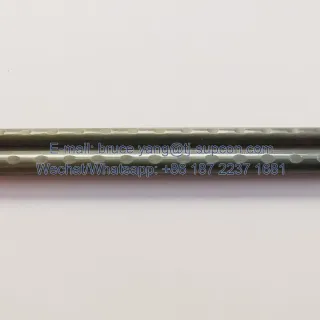Understand high-strength and high-efficiency prestressed steel wire in one article
1 Concept of prestressed steel wire
Abbreviation of steel wire for reinforcement of prestressed concrete structure
2 Classification of pc wire
(1) Classification based on surface shape:
With smooth rounded surfaces (smooth) and regularly deformed shapes (such as notches, female threads, male threads, and ribbed forms).
(2) Classification based on processing techniques:
Including methods like cold drawing, straightening and tempering, stabilization, cold rolling, and quenching and tempering (whether in oil, water, or through other means).
(3) Classification according to tensile strength:
Low-strength low-carbon cold drawn wire has a tensile strength of below 800MPa;
Medium-strength prestressed steel wire falls between 800~1470MPa;
High-strength types reach tensile strengths of 1470~1860MPa;
And ultra-high-strength variants exceed 1860MPa.
(4) According to cross-sectional shape:
Common shapes include round, elliptical, semicircular, twisted ears, and spline shaft types, among others.
(5) According to relaxation levels:
With ordinary relaxation levels (level I) and low relaxation levels (level II).
(6) Based on whether the surface is coated:
Options range from smooth surfaces without coatings to galvanized finishes, as well as epoxy and other coating types.
(7) Classification by chemical composition:
This encompasses both carbon steel wire and low (or micro) alloy steel wire.
3 Characteristics of prestressed steel wire
Prestressed Concrete Steel Wire, with a carbon content typically between 0.6% and 0.9%, must meet national standards. The wire rod diameter varies from φ6.5 to 14.0mm, and its metallographic structure primarily exhibits a troostite structure; it should exclude harmful formations like martensite or network cementite.
Regarding material properties:
To create a high-efficiency structural prestressed concrete steel wire, manufacturers require top-quality clean steel wire.
Comprehensive mechanical properties like adequate tensile strength, exceptional toughness, elevated fatigue strength, and minimal stress relaxation are crucial for prestressed steel wire applications.
When utilizing prestressed steel wires such as PC steel wire, PC steel strand, and PC steel rods within concrete products, it promotes the efficient use of materials while significantly enhancing concrete performance. This results in reduced crack appearances, minimized width of crack expansions under load, eliminated deflections under use loads, and improved shear bearing capacity and fatigue strength in concrete applications.

Raw material quality control is critical.
Dimension control involves regulating rolling temperatures for uniform batch consistency to reduce size fluctuations caused by temperature changes. Fine-tuning rolling tension minimizes dimensional inaccuracies while optimizing roller pass design enhances error corrections during the rolling process. Employing advanced equipment such as Morgan's sixth-generation finishing mill equipped with ORBIS optical diameter gauges facilitates online monitoring of wire diameter deviations.
Surface quality is addressed by implementing billet grinding techniques that eliminate defects, ensuring quality control to avoid structural imperfections like scars and cracks during processing.
Furthermore, maintaining a superior chemical composition, e.g., through converter or electric furnace steelmaking, ensures high purity in steel products.
Proper refining methods such as ladle refining or continuous casting techniques ensure cleanliness within the steel, enhancing processing performance.
Moreover, using magnetic stirring and light pressure technology minimizes center segregation in steel billets, preventing banded structure formations and ensuring the uniformity of the steel.
Controlled rolling and cooling processes allow for an optimal metallographic structure conducive to further processing techniques.
Inspection and delivery standards necessitate rigorous evaluation of chemical composition, mechanical properties, surface quality, dimensions, segregation, and cleanliness.
4 Application of prestressed steel wire
The use of prestressed steel wire is prevalent in industrial facilities, premium multi-level buildings, prestressed structures, various foundations, reinforcement in building columns, bridges on railways and roadways, urban overpasses, and even within nuclear power plant structures, TV towers, water towers, concrete silos, sewage treatment sites, geotechnical projects, water resource management, and standard prefabricated concrete products. The scope of its applications continues to broaden.

